|
Note: You must be registered in order to post a reply.
To register, click here. Registration is FREE!
|
| T O P I C R E V I E W |
| James N. |
Posted - October 20 2012 : 4:44:06 PM
After my recent detours to the "wildernesses" of modern Los Angeles and the California Gold Rush country, I propose to return more-to-topic with this first in a series of posts dealing with Gen. William Howe's 1777 Philadelphia Campaign and related sites in the area it encompassed. Firstly, a brief summary of events leading up to it:
Following his successful captures of New York City and Newport, Rhode Island in the summer and fall of 1776 and despite the resurgance of Washington's army at Trenton and Princeton, N. J. at the end of the year, British General William Howe fully intended to continue the campaign all the way to the Rebel capital, Philadelphia, the following year. Strangely, he began by sitting in place in New York until 1777 was half over, while George Washington's inferior and poorly-armed force glared from nearby Morristown, N. J. watching and waiting for his opponent's move. Meanwhile, Gen. John "Gentleman Johnny" Burgoyne began his advance from Canada toward the strongpoint Ft. Ticonderoga, aiming to split New England from the rest of the Colonies along the line of the Hudson.
At long last, Howe boarded transports and evacuated New York City, leaving his troublesome subordinate Henry Clinton to hold the place; unfortunately Washington had no indication of Howe's destination other than a general idea that it would be the capital, so thus felt compelled to remain in place and watch New York. When Howe's fleet was seen off the mouth of the Delaware River it seemed to confirm the threat, but it disappeared as quickly as it had come. It wasn't until he recieved positive word it had passed the Virginia Capes at Norfolk and entered Chesapeake Bay that Washington was finally able to leave the New York area and march to protect Philadelphia, hoping that somehow Phillip Schuyler and Horatio Gates would be able to deal with Burgoyne upstate.
Howe's troops were very dissapated after spending over a month cooped up on transports during the unaccountably long voyage and needed rest and recuperation at Elkton, Md., the tiny town at Head of Elk where that river flows into the Chesapeake's extreme northern point. His dragoons foraged in the neighborhood stealing horses to replace the many that had died enroute. Finally, on August 28, they began the march on Philadelphia, skirmishing there and at nearby Wilmington, Delaware; Sept. 3, 1777, Delaware's only "battle" of the Revolution ( really, only another skirmish ) was fought at Cooch's Bridge near the Cooch House.
Image Insert:
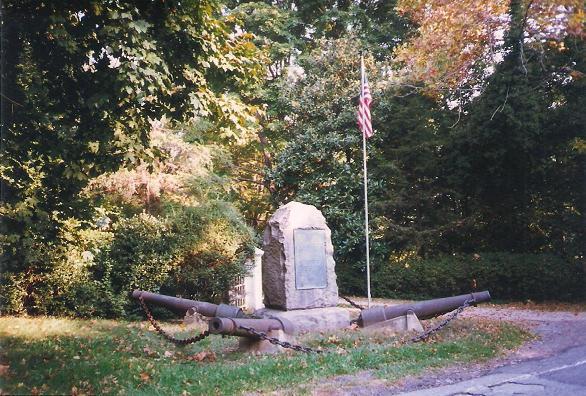
76.85 KB
This is supposedly Delaware's only monument to a Revolutionary battle; no doubt, either side would've been ecstatic to have included these Civil War era 20-pounder Parrott rifled cannon in their arsenals!
Image Insert:
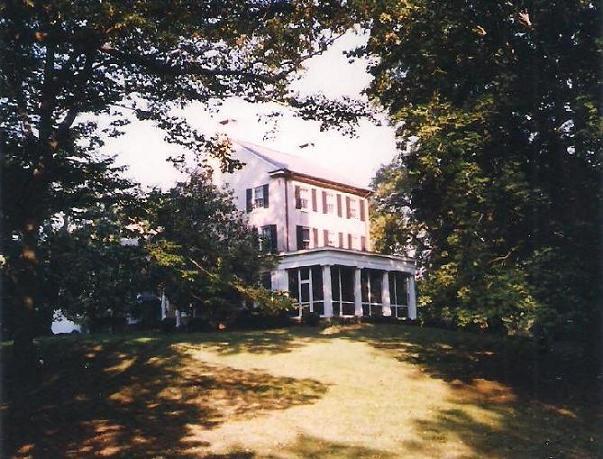
71.5 KB
Following the battle Howe's second-in-command, Gen. Lord Cornwallis, while leading the advance used the Cooch House as his headquarters.
Image Insert:
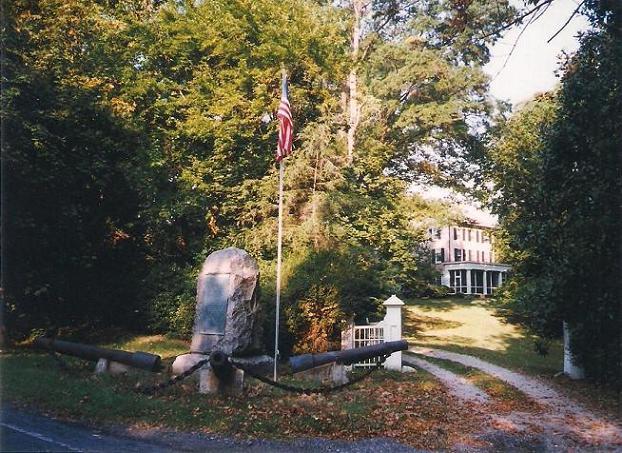
83.49 KB
|
| 1 L A T E S T R E P L I E S (Newest First) |
| James N. |
Posted - October 20 2012 : 7:46:01 PM
A little outside Wilmington between there and Head of Elk is Winterthur, the beautiful estate and gardens of Henry F. DuPont and his family. I include it here not because it played any role in the Revolution ( it wasn't built until the next century after the DuPonts "made a [ literal ] killing" selling gunpowder to the Federal government during the Civil War ), but because it is the repository of the finest collection of Colonial and early Federal furniture and decorative arts in the United States. Anyone interested in antiques and their history will be familliar with Winterthur from the credits in any book on the subject.
Image Insert:
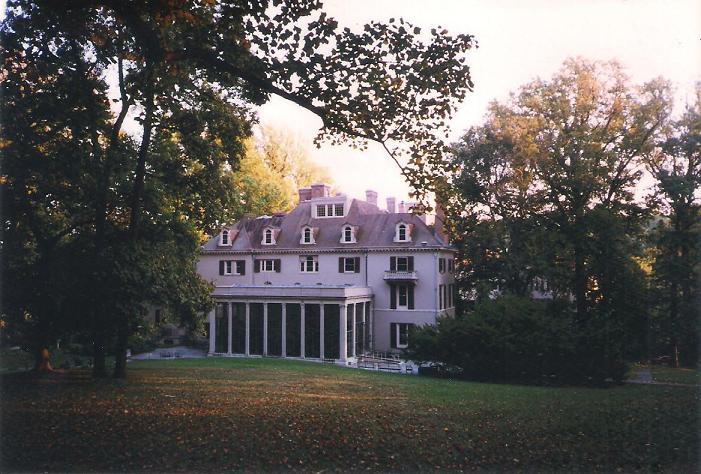
80.37KB
The front or original main entrance of the house.
DuPont, a descendant of French Hugenots whose family name was originally DuPont de Nemours, began his collection before the turn of the century, a time when intrest in our Colonial heritage was growing and it was possible to acquire specemens for a meager fraction of what they would bring in today's vastly inflated "collectables" market. His Beaux-arts-style mansion was literally stuffed with the collection, which since has spilled over into specially-purpose-built conservatories and display and exibition buildings and pavillions. It would be literally possible to spend several days in order to see everything since tickets are sold to tour specific galleries or areas of the house or its extensive gardens. Unfortunately, at the time of my visit in Oct., 1997, it was during a severe drought on the East Coast with accompanying higher-than-usual temperatures, leaving the gardens a burned-over mess.
Image Insert:
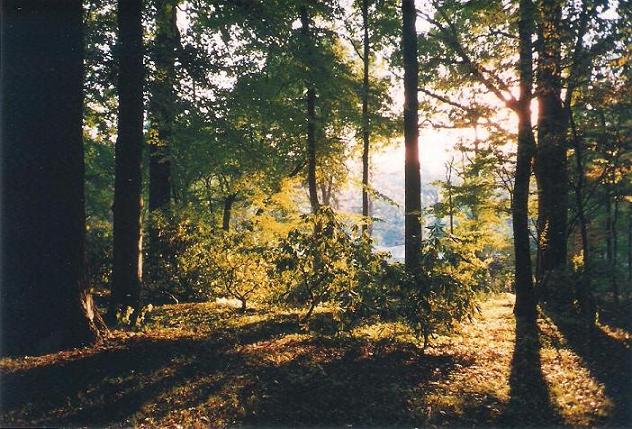
81.67KB
Although the photos look reasonable, this was a hot day making the tram ride I took around the grounds less-than-pleasant.
Image Insert:
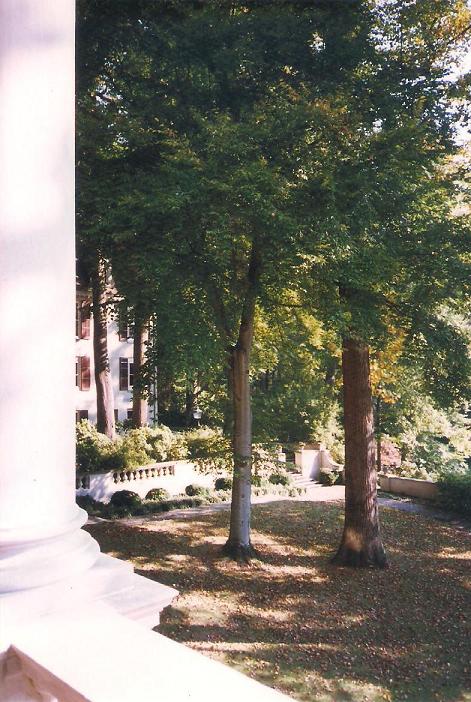
84KB
What should be lush grass is either brown or mostly gone; note the multi-story wing background.
Image Insert:
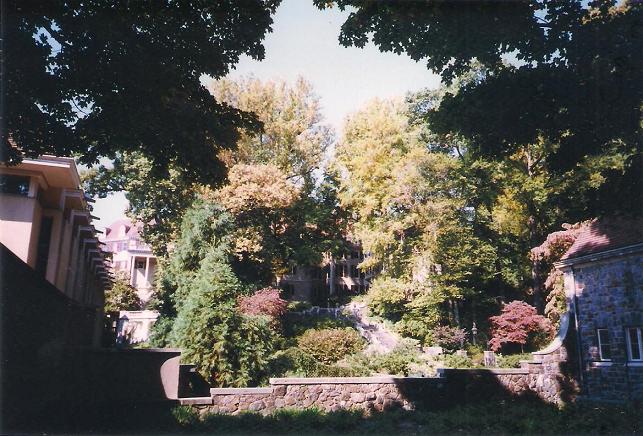
78.08KB
This view, though blocked by the trees, gives some idea of the sprawling nature of the place, with the newer exhibition building at left. As impressive as are the mansion house and grounds, the true treasures are the pricless examples of art and craftsmanship seen in the many rooms, each decorated around a theme of exact time period, manufacturer or artisan, or even color. I opted for a general tour that allowed me access to the main areas of the house; although I took very few photographs, I could easily have taken dozens:
Image Insert:
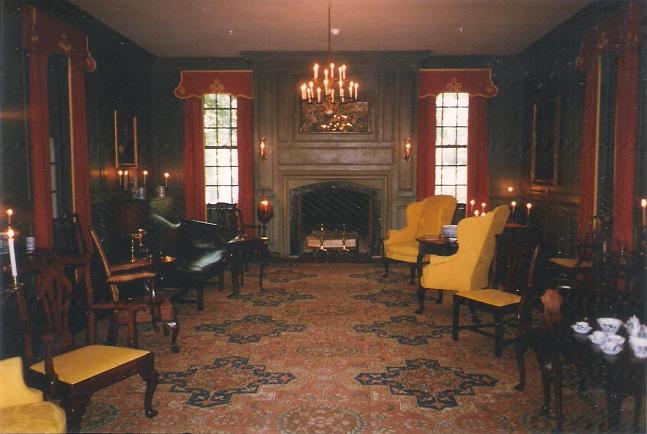
44.82KB
As ghastly as the process seems to modern preservationists, DuPont would scout the entire East Coast, then often buy either the contents of historic houses or an entire house and then rip out the interior, paneling and all, and transport the contents back to Winterthur, leaving only desolate shells of houses in his wake! Though remarkably destructive, it probably saved many priceless interiors and furnishings in the long run.
Image Insert:
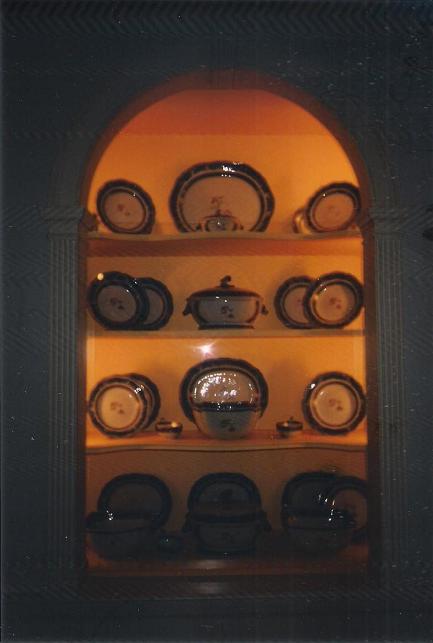
29.1KB
Among the priceless individual pieces are the set of Cincinatti China, so named for the Society of the Cincinatti, the vetran officer corps of the Revolution. Lafayette arranged for the manufacture in the Limoges porcelain factory outside Paris in the years between the American and French Revolutions. In the center of each piece is a hand-painted representation of the Society's eagle motif.
Image Insert:
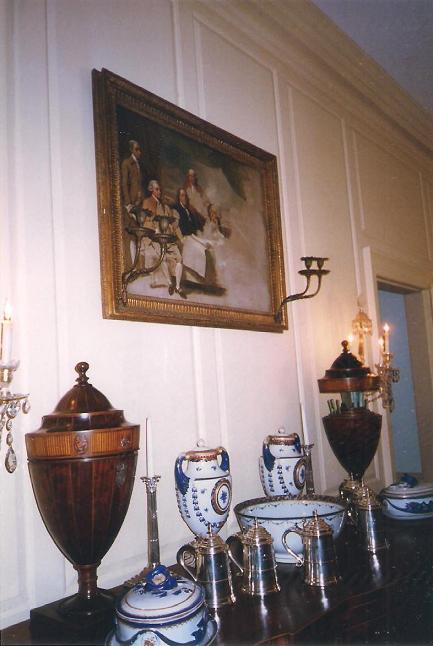
42.91KB
As attractive as are the individual Federalist-era serving pieces on the sideboard ( not to mention the silver tankards made by Paul Revere! ), the real star of this grouping is the painting hanging above - Benjamin West's original unfinished study for the Peace Treaty of Paris that ended the Revolution. It remains unfinished because after West traveled to France to get the likenesses of American comissioners ( l. - r. ) John Jay, John Adams, Benjamin Franklin, Henry Laurens, and secretary William Temple Franklin, the British comissioners in their humiliation refused to pose!
Image Insert:
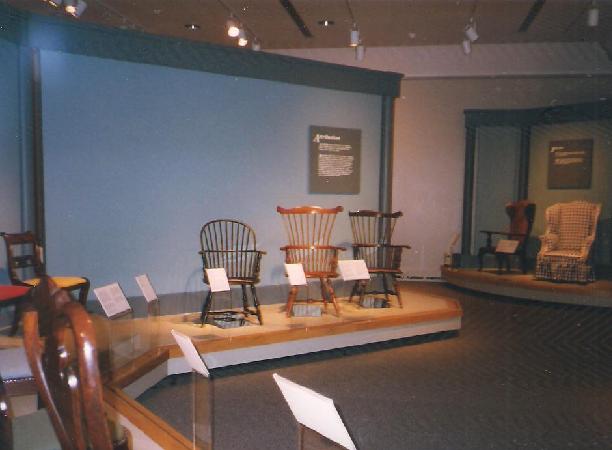
33.22KB
Winterthur is also place for serious study in its library and galleries, as well as temporary exhibits in some of the newer exhibiton rooms. When I was there this display of prominent Colonial furniture styles was going on.
Image Insert:
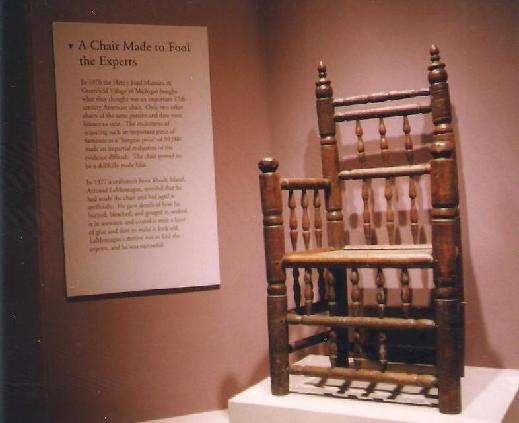
27.81KB
Even the odd or whimsical is represented, as in this notorious fake "Brewster Chair" a modern craftsman constructed and successfully aged in 1970 to purposely "fool the experts" at Henry Ford's Greenfield Villiage in Michigan - study of pieces like this help expose simillar frauds.
Image Insert:
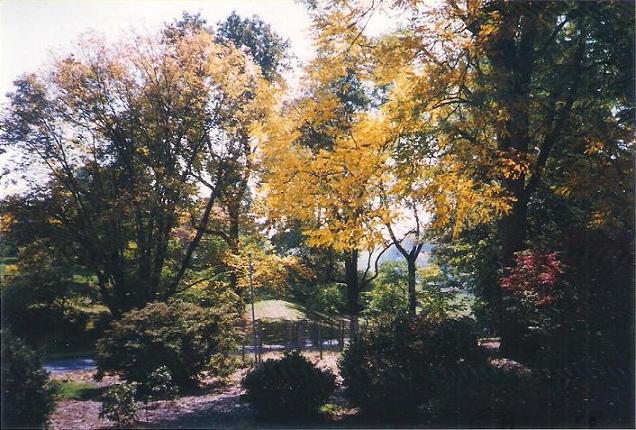
81.08KB
Next time, The Battle of Brandywine!
|
|
Around The Site:
~ What's New? ~
Pathfinding
|
Mohican Gatherings
|
Mohican Musings
|
LOTM Script
|
History
|
Musical Musings
|
Storefronts on the Frontier
Off the Beaten Trail
|
Links
Of Special Interest:
The Eric Schweig Gallery
|
From the Ramparts
|
The Listening Room
|
Against All Odds
|
The Video Clips Index
DISCLAIMER
Tune, 40, used by permission - composed by Ron Clarke
|
| The Mohican Board! [Bumppo's Redux!] |
© 1997-2025 - Mohican Press |
 |
|
| Current Mohicanland page raised in 0.09 seconds |
 |
|

![The Mohican Board! [Bumppo's Redux!] The Mohican Board! [Bumppo's Redux!]](images/wwwboard.gif)

